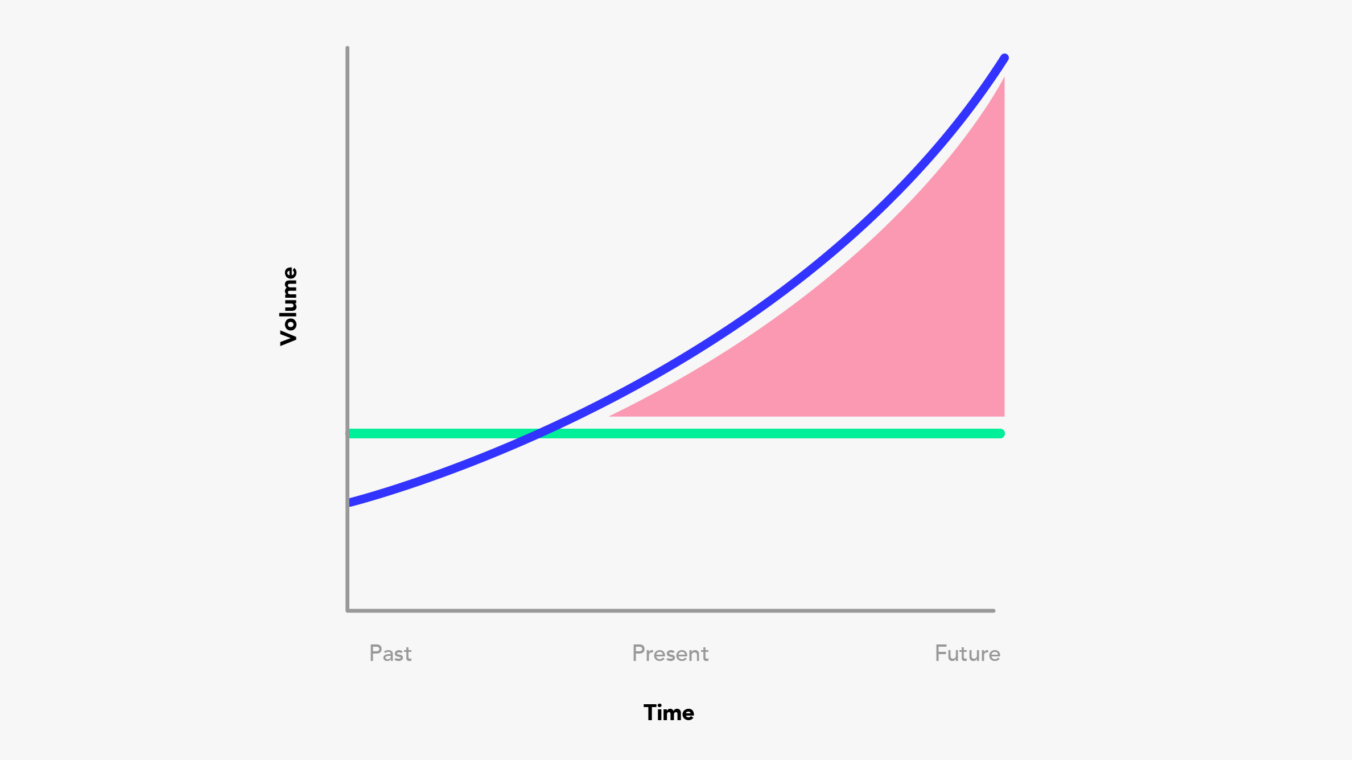For the first time in history, a majority of the global population is connected. Inevitably, this has created a new set of rules for brands. Still, many are struggling to keep up. What can brands do to not only survive, but meet all of their digital advertising and marketing content needs?
Take a look around — consumer experiences are connected, in-charge, and on-demand. Apps like Airbnb, Uber, and hundreds of others have empowered consumers. They now have constant access to a plethora of options. Brands who can provide the best consumer experience will prevail.
As such, consumers have grown discerning. In fact, 92% believe suggestions from friends and family more than advertising, while 70% report always or sometimes taking action based on online consumer opinions. Clearly, brands who are in-touch with their consumers opinions and desires will see a positive impact on their bottom line, too Just look how Tesla reacted to a single customer suggestion:
@elonmusk can you guys program the car once in park to move back the seat and raise the steering wheel? Steering wheel is wearing.
— Paul Franks (@pjfranks1509) August 19, 2017
At the same time, work experiences are more remote, collaborative, and connected than ever. After all, 78% of knowledge workers have the ability to take flextime and work an average of 8 hours from home each week. It’s also predicted that by 2027, the majority of the US workforce will be working remotely. Technologies services (think Slack, Google Drive, Dropbox) support this shift, but what about for your creative production?
Marketers Are Struggling
You can see how circumstances have led to what we’ve coined the Content Gap. It’s the delta between the exponentially rising content needs marketers face and the flat or declining production resources and budgets they currently have. Businesses lack the capacity to make content at the speed and volume they need. Meanwhile, workplace resources are thinning even as content demands are increasing. Clearly, marketers need help with content. We know because we asked them. In a commissioned Celtra study conducted by Forrester Consulting, the following pain points were validated.
Insufficient output: 77% report that they could benefit from a more automated digital advertising strategy.
Missed advertising opportunities: 42% report that a cohesive platform to track production, operations, and performance would be most useful to creating and scaling their digital advertising.
Minimal creative relevance: 65% are connected with an organization’s ability to localize digital ad content.
Creative Automation Is Key
Creative Automation helps creative and in-house marketing teams design, approve, and deliver digital creative across the ever-growing number of campaigns, markets, designs, and variants. With automation, brands can move faster than ever while dramatically scaling content production.
Creative Automation software helps solve the Content Gap in several ways:
- Elimination of repetitive tasks and manual labor associated with resizing, reformatting, and scaling out campaign concepts for specific channels
- Content scaling dimensions become levers for performance, including content variety, designs, and layouts
- Feedback, commenting, and review are moved into the cloud, no more email chains and spreadsheets
- Marketing teams are empowered to self-service brand-approved creative variants on demand for paid and owned channels, without the need to go to production teams and start the production process from scratch each time
What Celtra Customers Are Saying
Marcus Cho, Global Lead, Consumer Engagement, Audience & Media Personalization, Adidas:
Celtra let us turn our brand tool kits into flexible creative master templates that could be adapted into 100s of beautiful variants by local markets, saving us money and time per campaign, while maintaining quality and enabling personalization.
Veda Partalo, VP, Premium Brand & Marketing, Spotify:
By introducing creative production automation to our workflows, Spotify has been able to produce and launch 4 times more content with twice as fast production cycles with our global summer campaign. This kind of scale would not be feasible with manual creation.
Patricia Jimenez, Head of Automation, Spotify:
Spotify is growing rapidly. We’re in 92 different markets with multiple product offerings in various languages. Any brand that operates in a similar setup knows that creative development needs will grow exponentially. This also drove a sense of urgency to find software like Celtra to finally meet that scale.
The Takeaway
Connected consumers require a high volume of quality content. At the same time, brands are becoming more collaborative and remote — they need faster, more unified creative production to survive. Creative automation software is the answer to solving both sides of the equation. By tripling production speed, brands can deliver much more content. Plus, messages can offer the personalized attention consumers have grown to expect.
Interested in learning more about closing your Content Gap? Reach out today.

